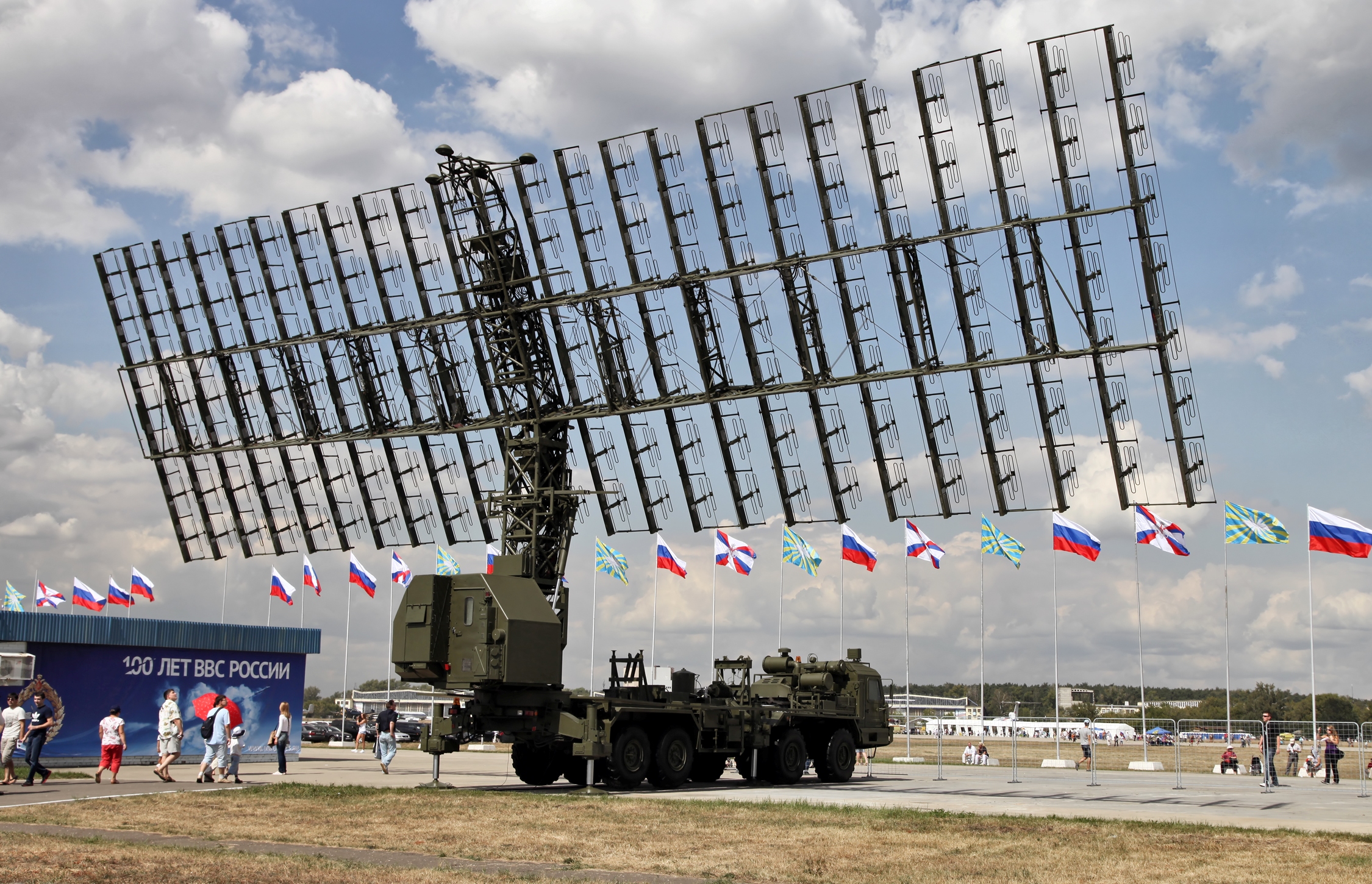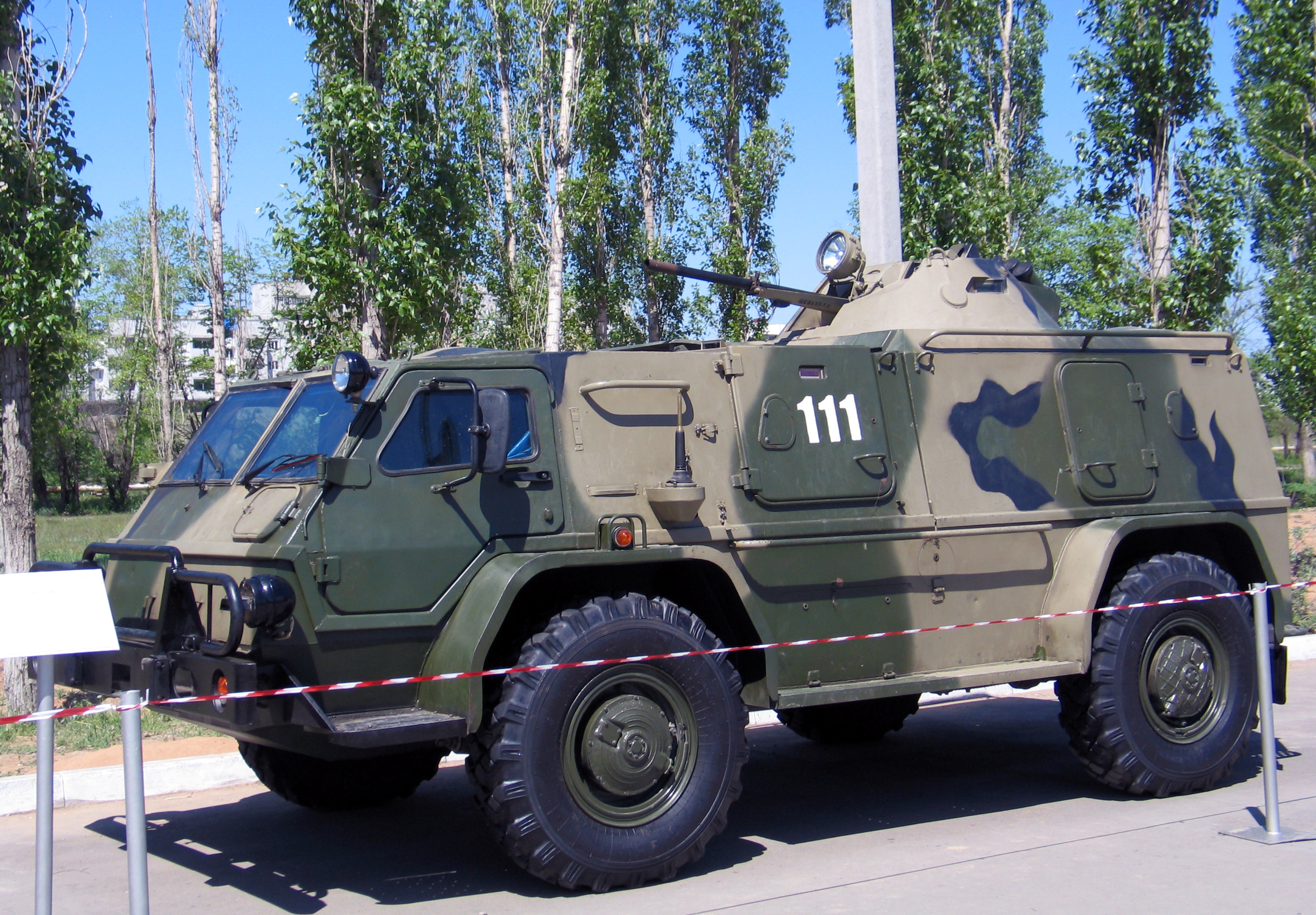|
1L121-E
The 1L121-E is a Russian mobile air defense radar. It was first shown in 2011 at the MAKS Air Show outside Moscow. It was developed by the Nizhny Novgorod Research Institute of Radio Engineering (NNIIRT). Description The 1L121-E can be mounted on a wide variety of vehicles including a BTR-80 and a GAZ Vodnik. The 1L121-E gives full hemispheric coverage and is designed to function on the move or on the halt. Moving from stationary to mobile operation requires about two minutes. The radar spots and classifies up to four different target types, positioning each target with an accuracy of 100 meters. With about 1 degree in accuracy for elevation and azimuth. It is mainly designed to detect and track airborne targets including low-level small UAVs An unmanned aerial vehicle (UAV), commonly known as a drone, is an aircraft without any human pilot, crew, or passengers on board. UAVs are a component of an unmanned aircraft system (UAS), which includes adding a ground-based c ... [...More Info...] [...Related Items...] OR: [Wikipedia] [Google] [Baidu] |
Nizhny Novgorod Research Institute Of Radio Engineering
The Nizhny Novgorod Research Institute of Radio Engineering (NNIIRT) is a Russian electronics company specializing in the development and manufacturing of radar equipment. It is a subsidiary of the Almaz-Antey group. History Founded in 1947, NNIIRT is based in the city of Nizhny Novgorod. Beginning in 1975, NNIIRT developed the first VHF 3D radar capable of measuring height, range, and azimuth to a target. This effort produced the 55Zh6 'Nebo' VHF surveillance radar, which passed acceptance trials in 1982. In the post–Cold War era, NNIIRT developed the 55Zh6 Nebo U 'Tall Rack' radar, which has been integrated with the SA-21 anti-aircraft weapons system. This system is deployed around Moscow. In 2013, NNIIRT announced the further development of the 55Zh6UME Nebo-UME, which combines VHF and L band The L band is the Institute of Electrical and Electronics Engineers (IEEE) designation for the range of frequencies in the radio spectrum from 1 to 2 gigahertz (GHz). This is a ... [...More Info...] [...Related Items...] OR: [Wikipedia] [Google] [Baidu] |
Radar
Radar is a detection system that uses radio waves to determine the distance (''ranging''), angle, and radial velocity of objects relative to the site. It can be used to detect aircraft, ships, spacecraft, guided missiles, motor vehicles, weather formations, and terrain. A radar system consists of a transmitter producing electromagnetic waves in the radio or microwaves domain, a transmitting antenna, a receiving antenna (often the same antenna is used for transmitting and receiving) and a receiver and processor to determine properties of the objects. Radio waves (pulsed or continuous) from the transmitter reflect off the objects and return to the receiver, giving information about the objects' locations and speeds. Radar was developed secretly for military use by several countries in the period before and during World War II. A key development was the cavity magnetron in the United Kingdom, which allowed the creation of relatively small systems with sub-meter resolution. Th ... [...More Info...] [...Related Items...] OR: [Wikipedia] [Google] [Baidu] |
MAKS (air Show)
MAKS (russian: МАКС, russian: label=short for, Международный авиационно-космический салон, Mezhdunarodnyj aviatsionno-kosmicheskij salon, "International Aviation and Space Show") is an international air show held at Zhukovsky International Airport, the home of the Gromov Flight Research Institute in Zhukovsky, southeast of Moscow, Russia. The event was organized by the Russian Ministry of Industry and Trade until 2009, more recently by the Government of Moscow and Aviasalon. The first show, Mosaeroshow-92, was held in 1992. Since 1993, the air show was renamed as MAKS and is held biennially on odd years. MAKS is an important event for the Russian aviation industry and the Commonwealth of Independent States. Although it started mainly as an entertainment event, the show soon became a marketplace where Russian aerospace companies could negotiate export contracts and Russian air carriers could make foreign contacts. Background and histo ... [...More Info...] [...Related Items...] OR: [Wikipedia] [Google] [Baidu] |
BTR-80
The BTR-80 (russian: бронетранспортёр, bronyetransportyor, literally "armoured transporter") is an 8×8 wheeled amphibious armoured personnel carrier (APC) designed in the USSR. It was adopted in 1985 and replaced the previous vehicles, the BTR-60 and BTR-70, in the Soviet Army. It was first deployed during the Soviet–Afghan War. The BTR-80 was developed into the larger BTR-90. Description The Soviets based the BTR-80 on the BTR-70 APC, which itself was based on the BTR-60. It has a single 260-hp V-8 turbocharged water-cooled diesel engine, an improvement over the twin gasoline engines installed in the BTR-60 and BTR-70 vehicles. The reconfigured rear portion of the hull accommodates the new, single engine. The Soviets removed the roof chamfers of the modified BTR-70, raised the rear, and squared off the rearward-sloping engine compartment. Standard equipment includes TNPO vision blocks, TNP-B and TKN-3 optical devices for the driver and commander, an OU ... [...More Info...] [...Related Items...] OR: [Wikipedia] [Google] [Baidu] |
GAZ Vodnik
Vodnik ( utomotive number GAZ-3937 and its modified version GAZ-39371 is a Russian high-mobility multipurpose military vehicle manufactured by GAZ. It is a "heavy modification" of the civil GAZ-2330 "Tigr". Its name comes from the Russian "водник" – a person employed in water transport, but is also used to refer to some person or object simply related to water. The Vodnik was adopted by the Russian Armed Forces. Description This vehicle is amphibious, and uses its wheels to propel itself when afloat. It has a water-displacing hermetic hull which provides improved fording performance and a 4x4-type chassis with independent suspension and a centralized system of tire-pressure control. The ground clearance is 475 mm. The standard undercarriage with a cab can be fitted with a number of different modules with various number of passenger seats and cargo compartments, seating up to 10 people. It is powered by a 175 hp (130 kW) diesel engine giving a top spe ... [...More Info...] [...Related Items...] OR: [Wikipedia] [Google] [Baidu] |
Unmanned Aerial Vehicle
An unmanned aerial vehicle (UAV), commonly known as a drone, is an aircraft without any human pilot, crew, or passengers on board. UAVs are a component of an unmanned aircraft system (UAS), which includes adding a ground-based controller and a system of communications with the UAV. The flight of UAVs may operate under remote control by a human operator, as remotely-piloted aircraft (RPA), or with various degrees of autonomy, such as autopilot assistance, up to fully autonomous aircraft that have no provision for human intervention. UAVs were originally developed through the twentieth century for military missions too "dull, dirty or dangerous" for humans, and by the twenty-first, they had become essential assets to most militaries. As control technologies improved and costs fell, their use expanded to many non-military applications.Hu, J.; Bhowmick, P.; Jang, I.; Arvin, F.; Lanzon, A.,A Decentralized Cluster Formation Containment Framework for Multirobot Systems IEEE Tr ... [...More Info...] [...Related Items...] OR: [Wikipedia] [Google] [Baidu] |
Ground Radars
Ground may refer to: Geology * Land, the surface of the Earth not covered by water * Soil, a mixture of clay, sand and organic matter present on the surface of the Earth Electricity * Ground (electricity), the reference point in an electrical circuit from which voltages are measured * Earthing system, part of an electrical installation that connects with the Earth's conductive surface * Ground and neutral, closely related terms Law * Ground (often grounds), in law, a rational motive or basis for a belief, conviction, or action taken, such as a legal action or argument: * Grounds for divorce, regulations specifying the circumstances under which a person will be granted a divorce Music * ''Ground'' (album), the second album by the Nels Cline Trio * "Ground" (song), one of the songs in the debut album of the Filipino rock band Rivermaya * Ground bass, in music, a bass part that continually repeats, while the melody and harmony over it change * ''The Ground'', a 2005 album by Nor ... [...More Info...] [...Related Items...] OR: [Wikipedia] [Google] [Baidu] |


_(526-04).jpg)


